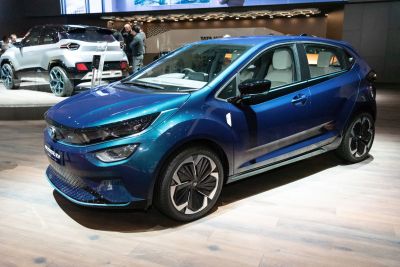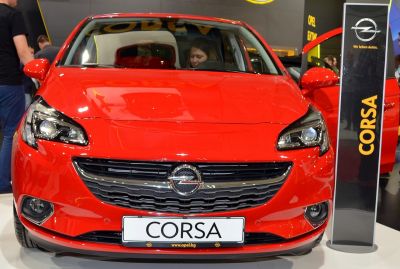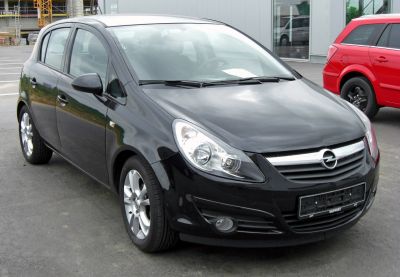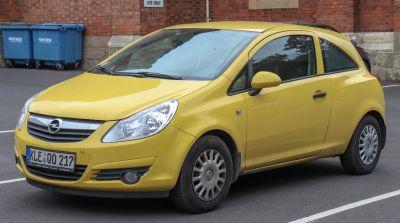 2020 Toyota Yaris (XP210) Dimensions, Size & Specs
2020 Toyota Yaris (XP210) Dimensions, Size & SpecsMeasurements of the 2020 Toyota Yaris, engineered for optimal performance and comfort
| Dimensions | |
|---|---|
| Length: | 3940-4030 mm155.1-158.7 in12.9-13.2 ft |
| Width: | 1695-1815 mm66.7-71.5 in5.6-6.0 ft |
| Width (Opened Mirrors): | 1745 mm68.7 in5.7 ft |
| Height: | 1455-1515 mm57.3-59.6 in4.8-5.0 ft |
| Ground Clearance: | 120-160 mm4.7-6.3 in0.4-0.5 ft |
| Trunk Capacity: | 207-286 liter7.3-10.1 cu ft |
| Trunk Capacity (Max): | 947 liter33.4 cu ft |
| Weight Specifications | |
| Curb Weight: | 990-1050 kg2183-2315 lbs |
| Maximal permitted Weight: | 1245-1645 kg2745-3627 lbs |
| Tire Specifications | |
| Rims Sizes: | 15-inch rims:
|
| Tire Sizes: |
|
The Toyota Yaris XP210 generation, produced from 2020 to 2024, is a versatile and efficient hatchback known for its compact yet practical dimensions suited for urban and suburban driving. The vehicle's length ranges from 3,940 mm to 4,030 mm (155.1 to 158.7 inches), offering a balanced footprint that facilitates easy maneuvering and parking in tight spaces. The width varies between 1,695 mm to 1,815 mm (66.7 to 71.5 inches), with a width of 1,745 mm (68.7 inches) when mirrors are opened, providing a stable stance on the road. The height spans from 1,455 mm to 1,515 mm (57.3 to 59.6 inches), giving the Yaris a sleek profile while maintaining comfortable interior headroom.
In terms of weight, the curb weight ranges from 990 kg to 1,050 kg (2,183 to 2,315 lbs), reflecting the car's lightweight construction aimed at improving fuel efficiency and handling. The maximum weight capacity varies between 1,245 kg to 1,645 kg (2,745 to 3,626 lbs), showing the vehicle's capability to carry passengers and cargo safely. The Yaris XP210 provides a practical luggage capacity of 207 to 286 liters (7.3 to 10.1 cubic feet) with all seats in place, which significantly expands to 947 liters (33.4 cubic feet) when the rear seats are folded, ideal for transporting larger items or luggage for trips.
Ground clearance ranges between 120 mm and 160 mm (4.7 to 6.3 inches), allowing the Yaris to comfortably handle urban road irregularities and mild off-road scenarios without compromising ride quality. The vehicle rides on a variety of rim sizes, including 6J x 15, 6J x 16, and 6J x 18, paired with tire sizes such as 185/60 R15, 195/55 R16, and a sportier 225/40 R18 option, enhancing both its driving dynamics and aesthetic appeal.
Overall, the Toyota Yaris XP210 hatchback is a well-rounded subcompact car that blends efficient dimensions, flexible cargo space, and a lightweight body for excellent urban performance and daily usability. Its size and weight specifications place it comfortably within the competitive space of modern hatchbacks, making it an ideal choice for buyers seeking practicality combined with Toyota's renowned reliability.
Discover the standout features that make the 2020 Toyota Yaris a leader in its class
Have a question? Please check our knowledgebase first.
The Toyota Yaris (XP210) produced between 2020 and 2024 has a length ranging from 3940 mm to 4030 mm (approximately 155.1 to 158.7 inches), a width between 1695 mm to 1815 mm (about 66.7 to 71.5 inches), with the mirrors opened it measures 1745 mm wide (68.7 inches). The height varies from 1455 mm to 1515 mm (57.3 to 59.6 inches). These dimensions affirm the Yaris as a compact hatchback ideal for urban environments.
The curb weight of the Toyota Yaris (XP210) ranges from 990 kg to 1050 kg (2183 to 2315 lbs), depending on the variant and equipment levels. The maximum allowable weight, including passengers and cargo, spans from 1245 kg to 1645 kg (2745 to 3626 lbs). This relatively light weight contributes to its fuel efficiency and nimble driving character, while the maximum weight capacity ensures it can comfortably carry multiple passengers and luggage.
The Toyota Yaris (XP210) offers a luggage capacity ranging from 207 liters to 286 liters (approximately 7.3 to 10.1 cubic feet) in the trunk with the rear seats up, which is fairly decent for a subcompact hatchback. When the rear seats are folded down, the luggage space expands significantly to 947 liters (about 33.4 cubic feet), enabling much larger cargo loads and adding great versatility for carrying bulky items or larger loads.
The Toyota Yaris (XP210) features a ride height or ground clearance between 120 mm and 160 mm (4.7 inches to 6.3 inches). This moderate ground clearance balances ease of entry and exit with practical everyday usability. It ensures the car handles urban road conditions efficiently, including speed bumps and rough patches, while still maintaining a lower center of gravity beneficial for handling and stability.
The Yaris (XP210) comes with rim sizes of 6J x 15, 6J x 16, and 6J x 18, supporting tire sizes of 185/60 R15, 195/55 R16, and 225/40 R18 respectively. These tire and rim options allow buyers to select between rides tuned for comfort, efficiency, or sportier handling characteristics. The stock-sized tires also ensure compatibility with common road surfaces and driving conditions.
Yes, the Toyota Yaris (XP210) fits comfortably into a standard residential garage. Typical garage widths range around 2.4 meters (about 7.9 feet) to 3 meters (9.8 feet), and with the Yaris’s width between 1695 mm and 1815 mm (66.7 to 71.5 inches) - or 1745 mm (68.7 inches) with mirrors open - it leaves sufficient space for opening doors and movement around the car. Its length of 3940 to 4030 mm (155.1 to 158.7 inches) also fits well within typical garage depths, which commonly exceed 5 meters (16.4 ft). Overall, parking and storing the Yaris indoors is very convenient.
Compared to its predecessor, the Toyota Yaris XP130, the XP210 generation is slightly larger in overall dimensions. The length increase from approximately 3950 mm in the older model to up to 4030 mm in the XP210 generation provides added cabin and cargo room. Width and height measurements also saw modest growth, enhancing interior space and presence on the road. This dimensional increase reflects Toyota's aim to deliver a more spacious, comfortable, and modern small hatchback while retaining compactness for city driving.
The Toyota Yaris (XP210) competes well within the compact hatchback segment in terms of size and versatility. Its length (3940-4030 mm) and width (1695-1815 mm) are comparable to competitors like the Ford Fiesta, Volkswagen Polo, and Honda Jazz/Fit. The flexible luggage capacity with rear seats folded—947 liters—is particularly competitive, often exceeding rivals. With a relatively low curb weight, the Yaris emphasizes efficiency and nimbleness. Its well-balanced interior space, combined with compact footprint, makes it an excellent choice for buyers seeking practicality in urban or suburban settings.
The Toyota Yaris (XP210) introduced significant upgrades over previous generations, particularly focusing on safety and connectivity. It features Toyota Safety Sense as standard, which includes advanced driver assistance systems like pre-collision braking, lane departure alert, adaptive cruise control, and road sign assist. The design became sportier and more aerodynamic, with a modernized grille and sleek headlights. The car also offers updated infotainment systems compatible with Apple CarPlay and Android Auto, enhancing user convenience. Hybrid powertrain options were also introduced, underscoring Toyota's commitment to improved fuel economy and reduced emissions.
Yes, the Toyota Yaris (XP210) is offered in multiple trim levels and variants, including petrol-only and hybrid versions, as well as different equipment packages. While the exterior dimensions remain consistent across variants, curb weight can vary from approximately 990 kg (2183 lbs) in lighter trims to up to 1050 kg (2315 lbs) in more equipped or hybrid versions. Additional features such as larger wheels, added safety equipment, or hybrid battery packs contribute to this weight difference. The choice of trim and drivetrain affects the driving dynamics, fuel efficiency, and overall feel but not the fundamental size of the vehicle.
Discover similar sized cars.

| Production: | 2019-2025 |
|---|---|
| Model Year: | 2020 |
| Length: | 3990 mm157.1 in |
| Width: | 1755 mm69.1 in |
| Height: | 1505-1523 mm59.3-60.0 in |

| Production: | 2014-2019 |
|---|---|
| Model Year: | 2015 |
| Length: | 4021 mm158.3 in |
| Width: | 1944 mm76.5 in |
| Height: | 1481 mm58.3 in |

| Production: | 2011-2014 |
|---|---|
| Model Year: | 2011 |
| Length: | 3999 mm157.4 in |
| Width: | 1944 mm76.5 in |
| Height: | 1488 mm58.6 in |

| Production: | 2006-2010 |
|---|---|
| Model Year: | 2007 |
| Length: | 3999-4040 mm157.4-159.1 in |
| Width: | 1944 mm76.5 in |
| Height: | 1488 mm58.6 in |

| Production: | 2006-2010 |
|---|---|
| Model Year: | 2007 |
| Length: | 3999-4040 mm157.4-159.1 in |
| Width: | 1944 mm76.5 in |
| Height: | 1488 mm58.6 in |

| Production: | 1993-2002 |
|---|---|
| Model Year: | 1993 |
| Length: | 3958 mm155.8 in |
| Width: | 1700 mm66.9 in |
| Height: | 1445 mm56.9 in |

| Production: | 2024-present |
|---|---|
| Model Year: | 2024 |
| Length: | 4030 mm158.7 in |
| Width: | 1810 mm71.3 in |
| Height: | 1570 mm61.8 in |

| Production: | 2024-present |
|---|---|
| Model Year: | 2025 |
| Length: | 4030 mm158.7 in |
| Width: | 1810 mm71.3 in |
| Height: | 1570 mm61.8 in |
